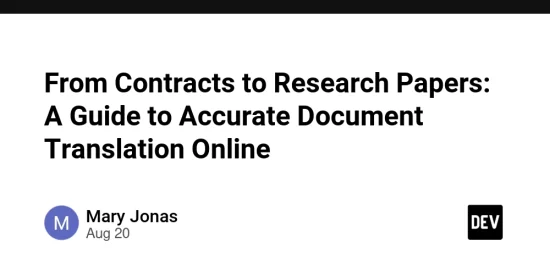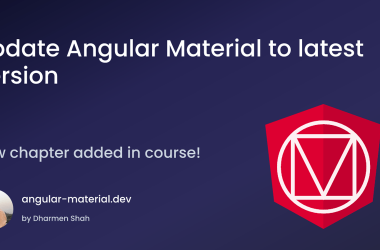In a world where knowledge, business, and legal frameworks move across borders, documents are rarely confined to a single language.
A contract written in English may need to be valid in Spanish courts. A research paper published in German might hold relevance for a student in India. A business proposal drafted in French could be pivotal to negotiations in the Middle East.
These scenarios illustrate why document translation has become a crucial task in global communication. Unlike everyday text or casual conversation, documents carry legal weight, academic precision, or financial importance — meaning even the smallest translation mistake can have serious consequences.
Why Document Translation Is More Complex Than Text Translation
When translating documents, the challenge is not only to convert words but also to preserve structure and context. A misplaced clause in a legal contract, a misaligned table in an academic report, or an incorrectly translated financial figure could cause misunderstandings or even disputes.
Here are the main challenges:
Legal documents: Complex clauses, numbering systems, and domain-specific language.
Academic papers: Citations, footnotes, technical terms, equations, and references that must remain intact.
Business documents: Tables, financial figures, and structured layouts that need to be preserved.
Personal documents: Certificates, resumes, and passports that require high accuracy and format fidelity.
The Role of AI in Modern Document Translation
Previously, translating a document required either manual effort or simple machine translation, both of which often compromised accuracy or formatting. Today, AI-powered document translation brings several advancements:
OCR Integration
AI can read scanned documents and images, making translation possible even for non-editable formats.
Layout Preservation
Instead of breaking tables, columns, or numbering, AI tools maintain the exact structure of the original document.
Domain Awareness
With large language models, AI recognizes legal, academic, or technical jargon and translates them with contextual accuracy.
Speed + Scale
What once took hours or days can now be translated in minutes without sacrificing reliability.
Real-World Use Cases
1. Legal Contracts & Agreements
Contracts are among the most sensitive documents to translate. Clauses, obligations, and conditions must be translated with absolute precision. Even a minor change in meaning could alter the legality of an agreement. AI ensures consistent legal terminology and keeps the structure intact.
2. Academic Research Papers
In academia, accuracy goes beyond words. Research papers include citations, footnotes, references, tables, and sometimes mathematical equations. AI-based translation ensures these elements remain aligned, so research can be shared across borders without losing credibility.
3. Business Reports & Corporate Documents
Annual financial reports, investor presentations, and strategy documents often contain charts, graphs, and balance sheets. AI-powered translation retains formatting while ensuring financial figures are correctly interpreted, reducing the risk of miscommunication.
4. Personal & Official Documents
From resumes and certificates to immigration paperwork, personal documents often require accurate translations with formatting preserved. AI translation can speed up these processes, avoiding delays in academic admissions, visa approvals, or job applications.
Best Practices for Document Translation
Always Validate Sensitive Content
Even with AI support, human review is essential for legal or high-stakes documents.
Use Trusted Services with Security in Mind
Since many documents are confidential, choose platforms that guarantee data privacy and encryption.
Prioritize Formatting
Avoid services that only provide raw text output — look for those that preserve headers, tables, and numbering systems.
Match Domain Expertise
Legal, academic, and business documents often contain specialized vocabulary. Tools that are trained for domain-specific accuracy reduce risks of mistranslation.
FAQs on Document Translation
1. How do I translate a PDF without breaking formatting?
A. Modern AI-powered platforms make this possible by preserving structure. Tools like TranslatesDocument are designed to retain layout integrity while providing accurate multilingual translation.
2. Can scanned or image-based documents be translated?
A. Yes. With OCR (Optical Character Recognition), even scanned PDFs or images can be converted into editable text and translated while keeping formatting intact.
3. What’s the main difference between general translation and document translation?
A. General translation focuses mainly on meaning. Document translation, on the other hand, ensures that structure, layout, numbering, and special elements like citations or tables remain consistent with the original.
4. Is online document translation secure?
A. Security depends on the platform. Reputable services emphasize privacy, data encryption, and secure storage. For example, TranslatesDocument prioritizes confidentiality for sensitive files.
5. Which file formats can be translated online?
A. Common formats include PDF, Word, Excel, PowerPoint, TXT, and subtitle files (SRT/VTT). This flexibility allows both professional and personal document use cases.
6. Can academic research with formulas or tables be translated properly?
A. Yes. AI-based tools now handle complex formatting like tables, equations, and footnotes, ensuring documents remain usable across languages.
Final Thoughts
Document translation is more than just converting words — it’s about preserving meaning, layout, and intent across languages.
For contracts, it protects legal obligations.
For academic work, it enables knowledge sharing worldwide.
For business reports, it keeps stakeholders aligned.
For personal documents, it ensures credibility in official processes.
As AI continues to evolve, document translation is becoming faster, more accurate, and more secure than ever before. With the right practices and tools, users can confidently translate everything from contracts to research papers while keeping the integrity of the original intact.






